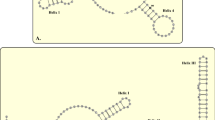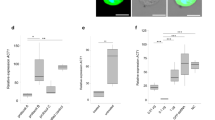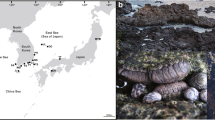Abstract
ZOOSPORES of Plasmodiophora brassicæ, Woron. and Spongospora subterranea, (Wallroth) Lagerheim have been described in the literature as uniciliate. Examination of active zoospores would appear to substantiate this description. However, when preparations stained by Cotners1 method are used, it can be shown that in addition to the long cilium, so apparent in the living zoospore, there is another which is shorter and less conspicuous. This biciliate character is illustrated by photomicrographs of zoospores of P. brassicæ (Figs. 1 and 2) and S. subterranea (Figs. 3 and 4).
This is a preview of subscription content, access via your institution
Access options
Subscribe to this journal
Receive 51 print issues and online access
$199.00 per year
only $3.90 per issue
Buy this article
- Purchase on SpringerLink
- Instant access to full article PDF
Prices may be subject to local taxes which are calculated during checkout
Similar content being viewed by others
References
Bot. Gaz., 89, 295; 1930.
Author information
Authors and Affiliations
Rights and permissions
About this article
Cite this article
LEDINGHAM, G. Zoospore Ciliation in the Plasmodiophorales. Nature 133, 534 (1934). https://doi.org/10.1038/133534b0
Issue date:
DOI: https://doi.org/10.1038/133534b0
This article is cited by
-
Advancements in Spongospora subterranea: Current Knowledge, Management Strategies, and Research Gaps
Potato Research (2024)
-
Key events in pathogenesis of spongospora diseases in potato: a review
Australasian Plant Pathology (2016)
-
The Myxomycetes II
The Botanical Review (1963)
-
Part I The morpholgy, cytology and life history of the fungus
Tijdschrift Over Plantenziekten (1954)
-
Over de invloed van fusarex op een aantasting door poederschurft (spongospora subterranea (wall.) lagerheim)
Tijdschrift Over Plantenziekten (1949)



